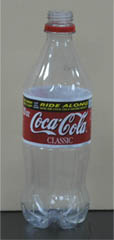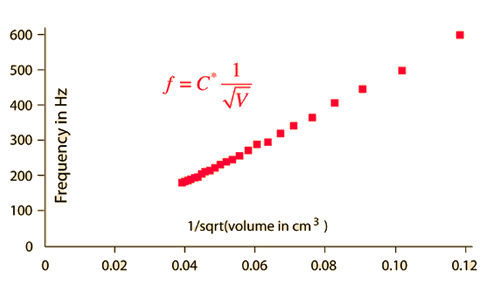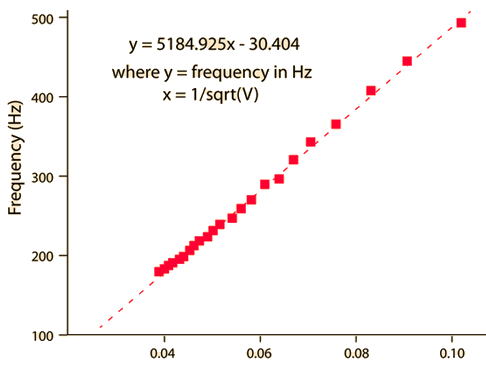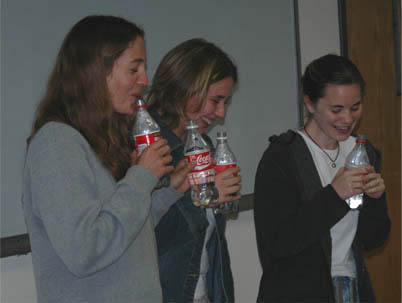Plastic Coke Bottle Resonance
The cavity resonance frequencies of a 20 oz plastic coke bottle were recorded by blowing over the top of it and measuring the frequency using a microphone and a digital frequency counter.
 |
 |
| Frequency data | Curve fit | Calculation of frequency vs volume |
| Glass coke bottles of different size |
Wave concepts
Resonance concepts
| HyperPhysics***** Sound | R Nave |



